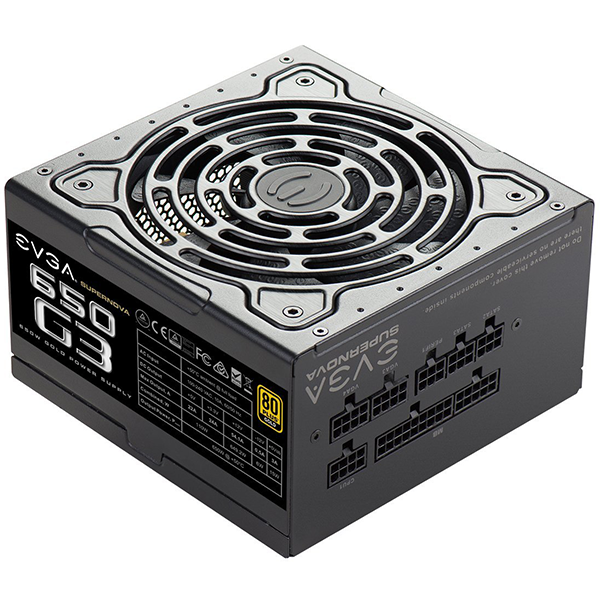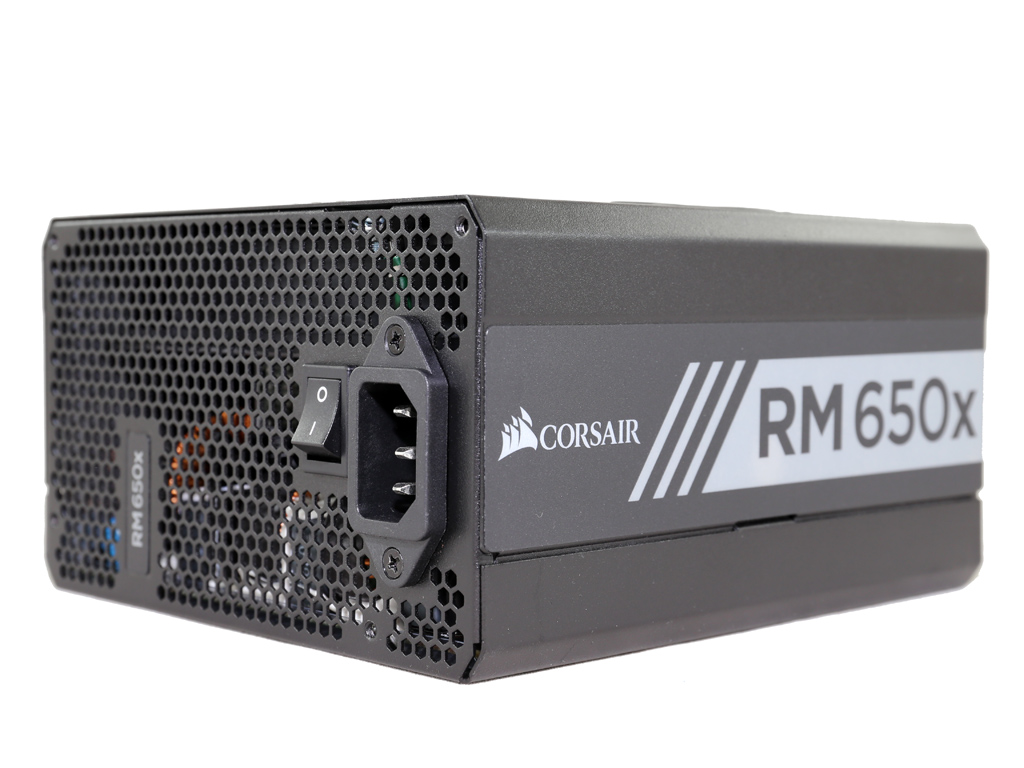Seasonic Prime Titanium Fanless 600W PSU Review
Why you can trust Tom's Hardware
Load Regulation, Hold-Up Time & Inrush Current
To learn more about our PSU tests and methodology, please check out How We Test Power Supply Units.
Primary Rails And 5VSB Load Regulation
Load Regulation testing is detailed here.

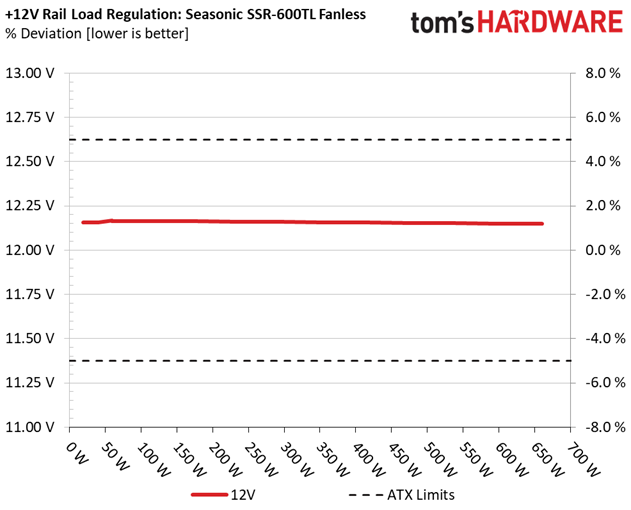

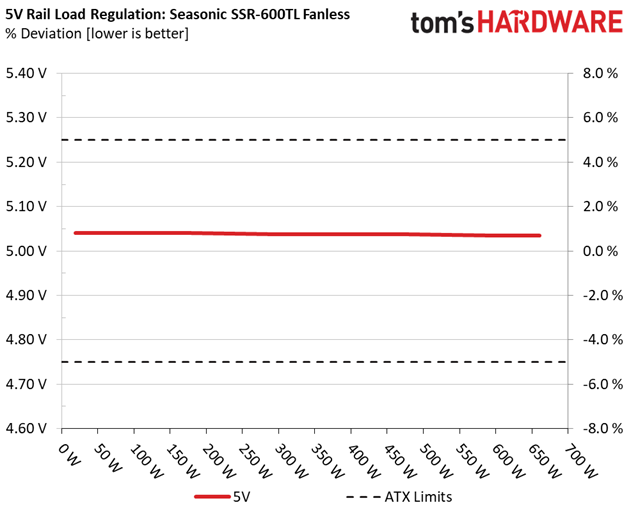
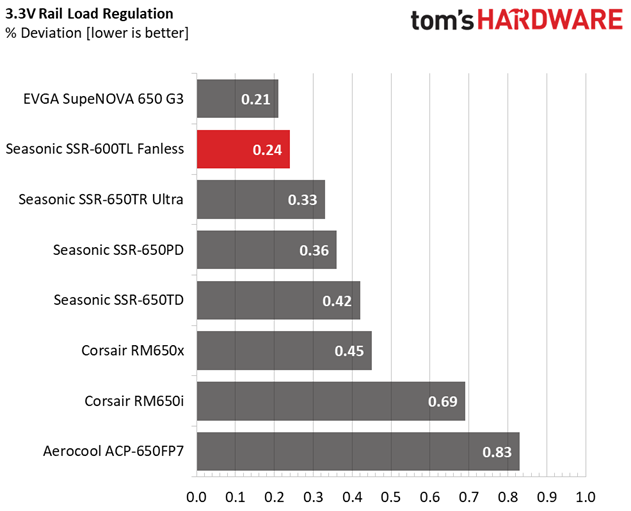

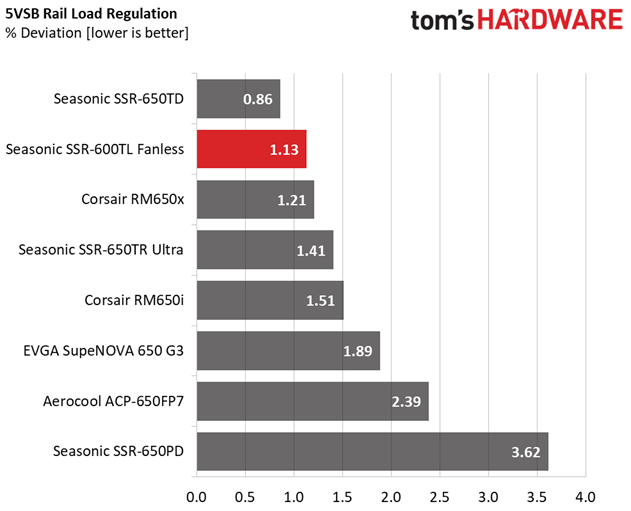
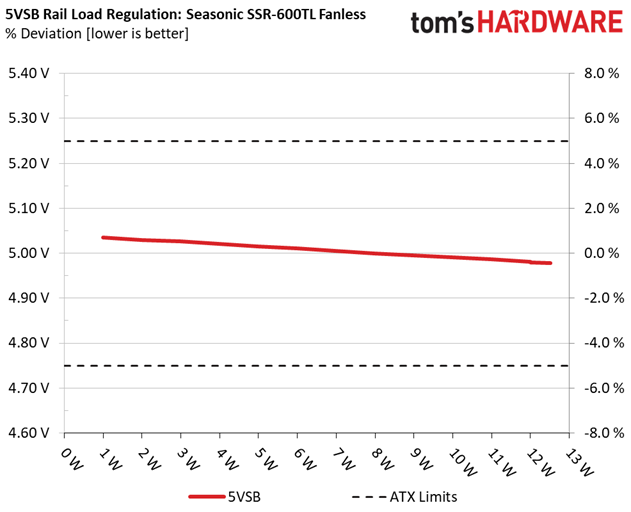
Hold-Up Time
Our hold-up time tests are described in detail here.

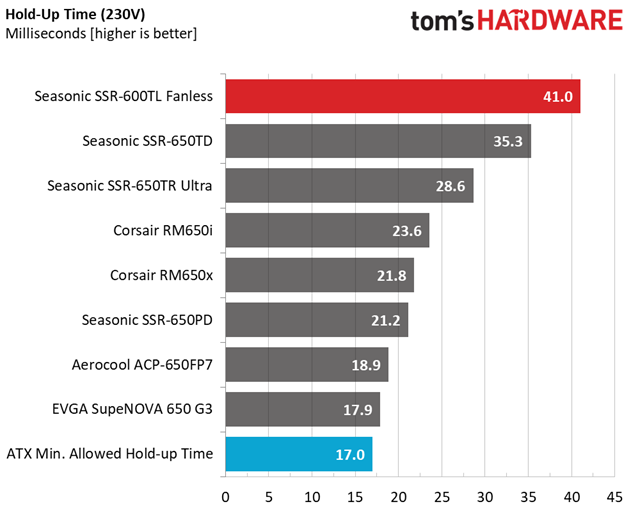
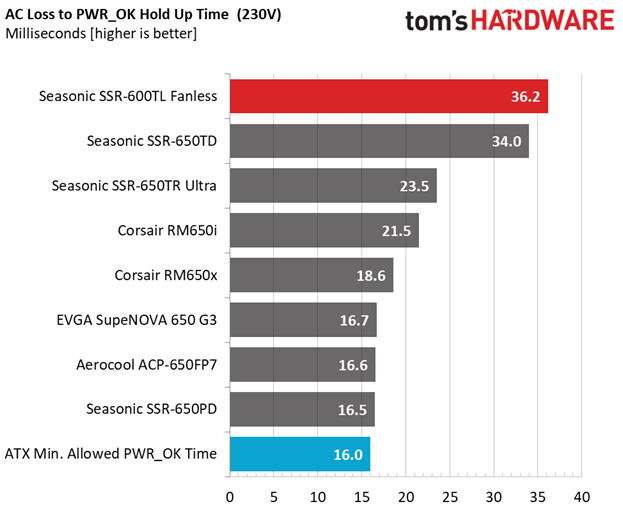
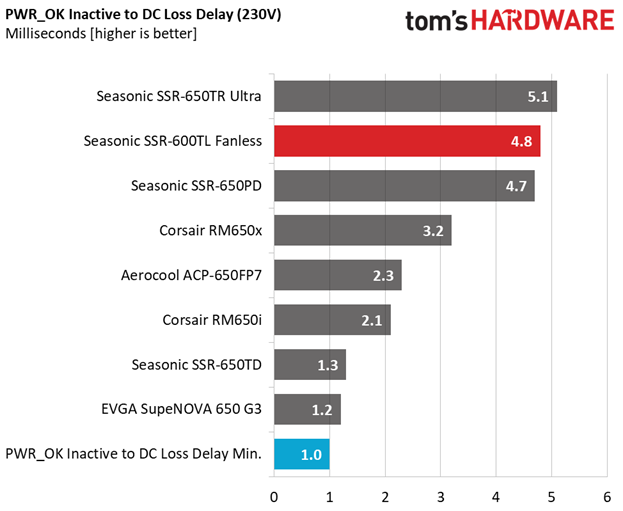
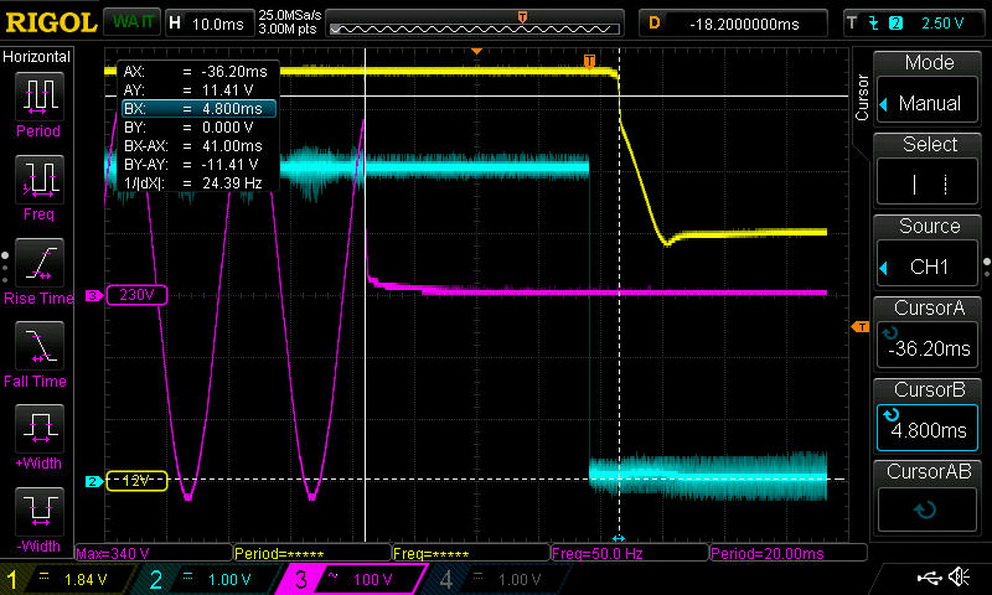
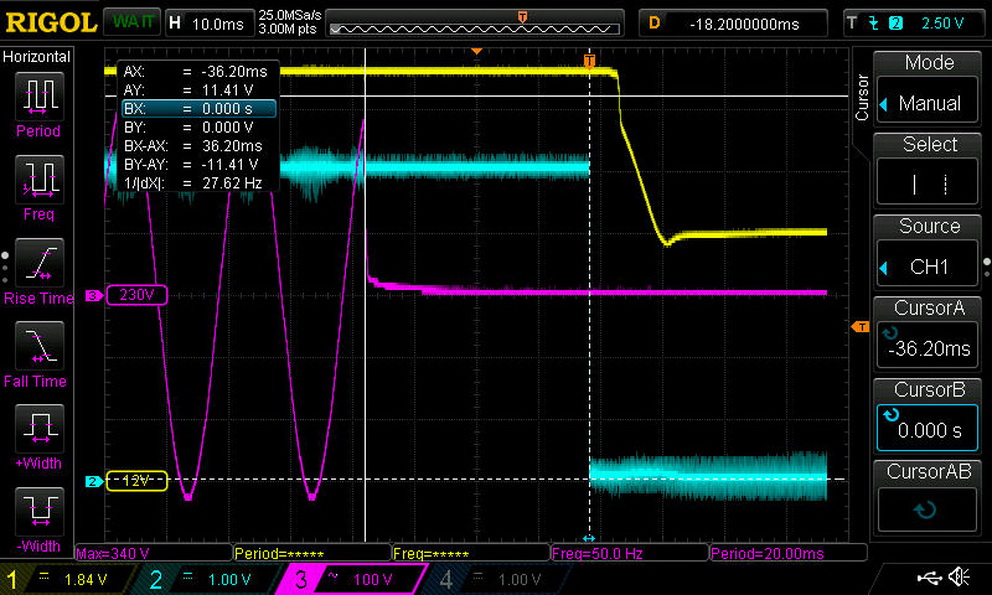
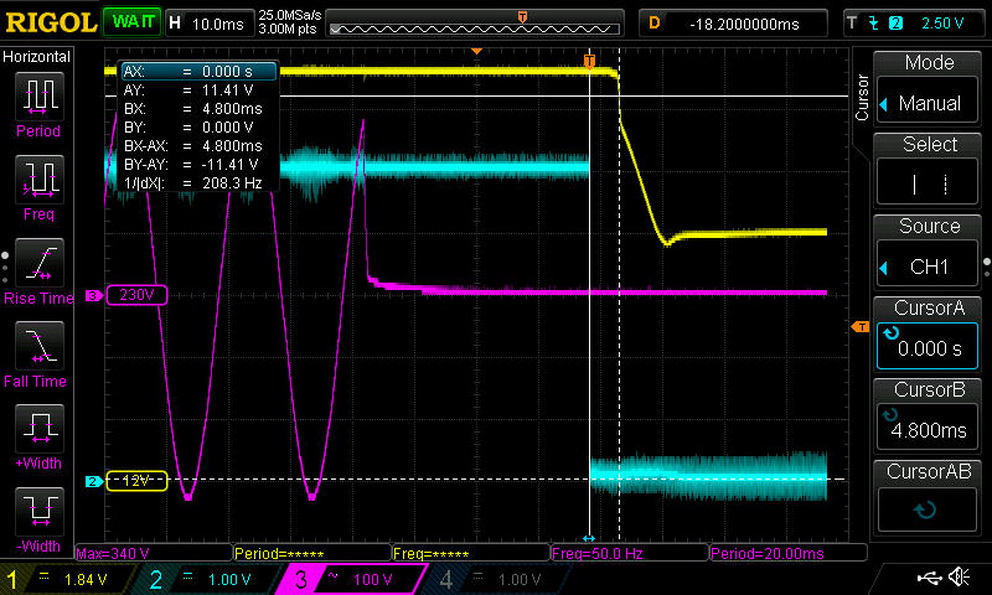
The hold-up time we measure is super-long at 41ms! This is the first time we've tested a PSU capable of exceeding 40ms. The power-good signal is accurate as well, with a delay of close to 5ms.
Inrush Current
For details on our inrush current testing, please click here.
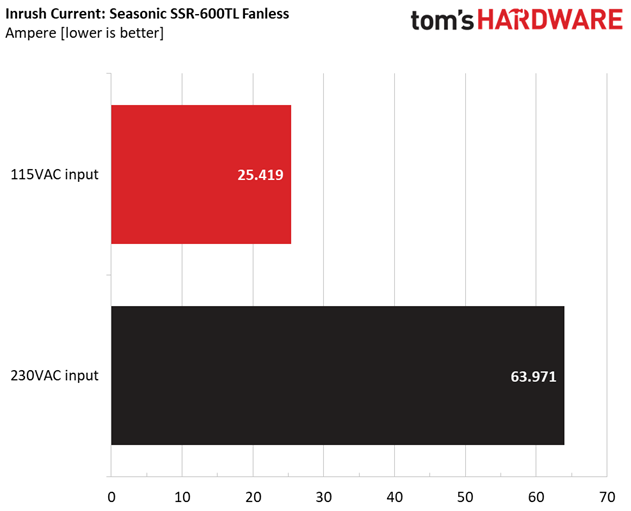
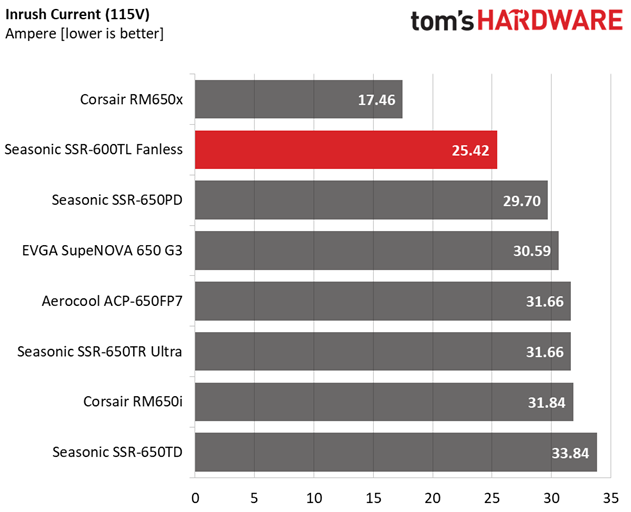
The inrush current with 115V input is low. However, it's on the high side when we test with 230V input.
Load Regulation And Efficiency Measurements
The first set of tests reveals the stability of the voltage rails and the SSR-600TL's efficiency. The applied load equals (approximately) 10 to 110 percent of the PSU's maximum load in increments of 10 percentage points.
Get Tom's Hardware's best news and in-depth reviews, straight to your inbox.
We conducted two additional tests. During the first, we stressed the two minor rails (5V and 3.3V) with a high load, while the load at +12V was only 0.1A. This test reveals whether a PSU is compatible with Intel's C6/C7 sleep states or not. In the second test, we determined the maximum load the +12V rail could handle with minimal load on the minor rails.
| Test # | 12V | 5V | 3.3V | 5VSB | DC/AC (Watts) | Efficiency | Fan Speed | PSU Noise | Temps (In/Out) | PF/AC Volts |
|---|---|---|---|---|---|---|---|---|---|---|
| 1 | 3.152A | 1.983A | 1.972A | 0.997A | 59.929 | 89.810% | 0 RPM | <6.0 dB(A) | 43.80°C | 0.945 |
| 12.164V | 5.041V | 3.343V | 5.015V | 66.729 | 37.70°C | 115.29V | ||||
| 2 | 7.298A | 2.976A | 2.960A | 1.198A | 119.660 | 92.300% | 0 RPM | <6.0 dB(A) | 44.52°C | 0.983 |
| 12.163V | 5.040V | 3.342V | 5.011V | 129.643 | 37.87°C | 115.21V | ||||
| 3 | 11.804A | 3.474A | 3.441A | 1.399A | 179.568 | 93.269% | 0 RPM | <6.0 dB(A) | 44.98°C | 0.992 |
| 12.162V | 5.040V | 3.341V | 5.005V | 192.526 | 38.08°C | 115.13V | ||||
| 4 | 16.316A | 3.969A | 3.950A | 1.601A | 239.601 | 93.393% | 0 RPM | <6.0 dB(A) | 45.76°C | 0.993 |
| 12.160V | 5.039V | 3.340V | 5.000V | 256.550 | 38.46°C | 115.05V | ||||
| 5 | 20.495A | 4.962A | 4.940A | 1.802A | 299.693 | 93.308% | 0 RPM | <6.0 dB(A) | 46.86°C | 0.995 |
| 12.159V | 5.038V | 3.339V | 4.995V | 321.186 | 39.33°C | 115.06V | ||||
| 6 | 24.679A | 5.953A | 5.929A | 2.004A | 359.813 | 92.907% | 0 RPM | <6.0 dB(A) | 48.67°C | 0.992 |
| 12.157V | 5.038V | 3.339V | 4.991V | 387.284 | 40.51°C | 114.98V | ||||
| 7 | 28.829A | 6.949A | 6.917A | 2.207A | 419.540 | 92.601% | 0 RPM | <6.0 dB(A) | 50.42°C | 0.992 |
| 12.156V | 5.037V | 3.338V | 4.986V | 453.064 | 41.33°C | 114.89V | ||||
| 8 | 33.046A | 7.943A | 7.910A | 2.410A | 480.051 | 92.258% | 0 RPM | <6.0 dB(A) | 52.65°C | 0.993 |
| 12.154V | 5.037V | 3.337V | 4.981V | 520.338 | 42.76°C | 114.81V | ||||
| 9 | 37.595A | 8.441A | 8.393A | 2.410A | 539.364 | 91.774% | 0 RPM | <6.0 dB(A) | 54.01°C | 0.994 |
| 12.152V | 5.036V | 3.336V | 4.980V | 587.707 | 43.64°C | 114.81V | ||||
| 10 | 42.210A | 8.939A | 8.904A | 2.512A | 600.069 | 91.425% | 0 RPM | <6.0 dB(A) | 55.02°C | 0.995 |
| 12.150V | 5.035V | 3.336V | 4.978V | 656.353 | 44.26°C | 114.72V | ||||
| 11 | 47.161A | 8.940A | 8.904A | 2.512A | 660.122 | 91.077% | 0 RPM | <6.0 dB(A) | 57.43°C | 0.995 |
| 12.148V | 5.035V | 3.335V | 4.977V | 724.796 | 45.18°C | 114.63V | ||||
| CL1 | 0.733A | 12.002A | 12.000A | 0.000A | 109.494 | 88.811% | 0 RPM | <6.0 dB(A) | 54.21°C | 0.980 |
| 12.158V | 5.038V | 3.343V | 5.062V | 123.289 | 43.91°C | 115.21V | ||||
| CL2 | 50.007A | 1.001A | 1.000A | 1.000A | 620.818 | 91.973% | 0 RPM | <6.0 dB(A) | 55.39°C | 0.995 |
| 12.147V | 5.036V | 3.335V | 5.007V | 675.002 | 43.84°C | 114.70V |
Load regulation is very tight on all rails. Moreover, the PSU clearly handles tough environmental conditions easily, as our ambient temperature reached 45°C.
Efficiency-wise, the PSU doesn't satisfy 80 PLUS' requirements for a Titanium badge. Then again, we also test at a much higher ambient temperature than the 80 PLUS organization, so it's only natural for our results to reflect lower efficiency under such conditions.
MORE: Best Power Supplies
MORE: How We Test Power Supplies
MORE: All Power Supply Content
Current page: Load Regulation, Hold-Up Time & Inrush Current
Prev Page Teardown & Component Analysis Next Page Efficiency, Temperature & Noise
Aris Mpitziopoulos is a contributing editor at Tom's Hardware, covering PSUs.

